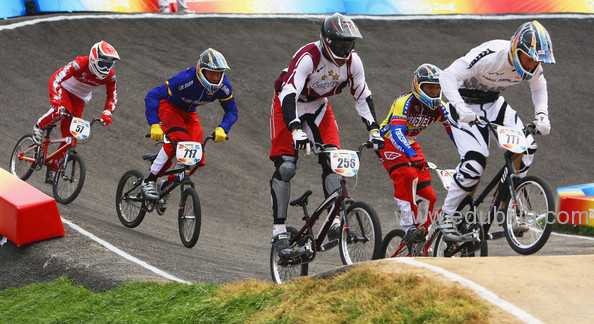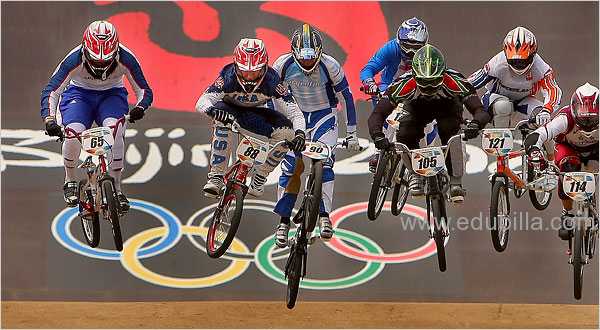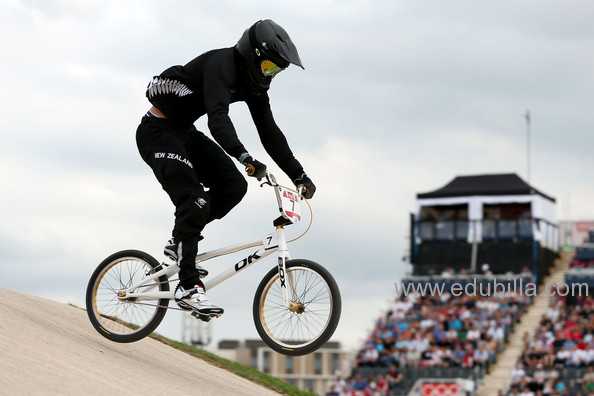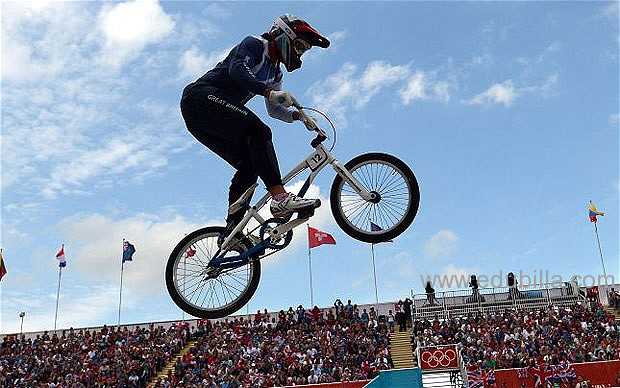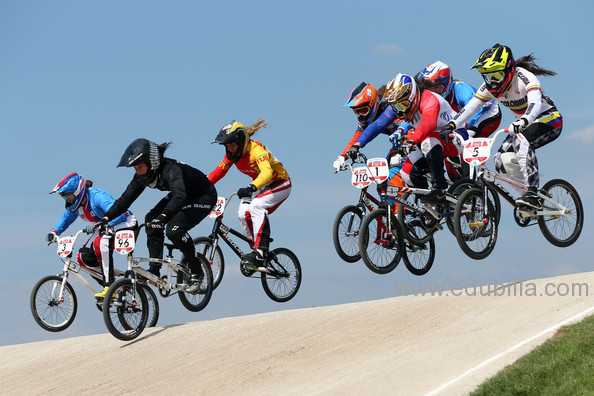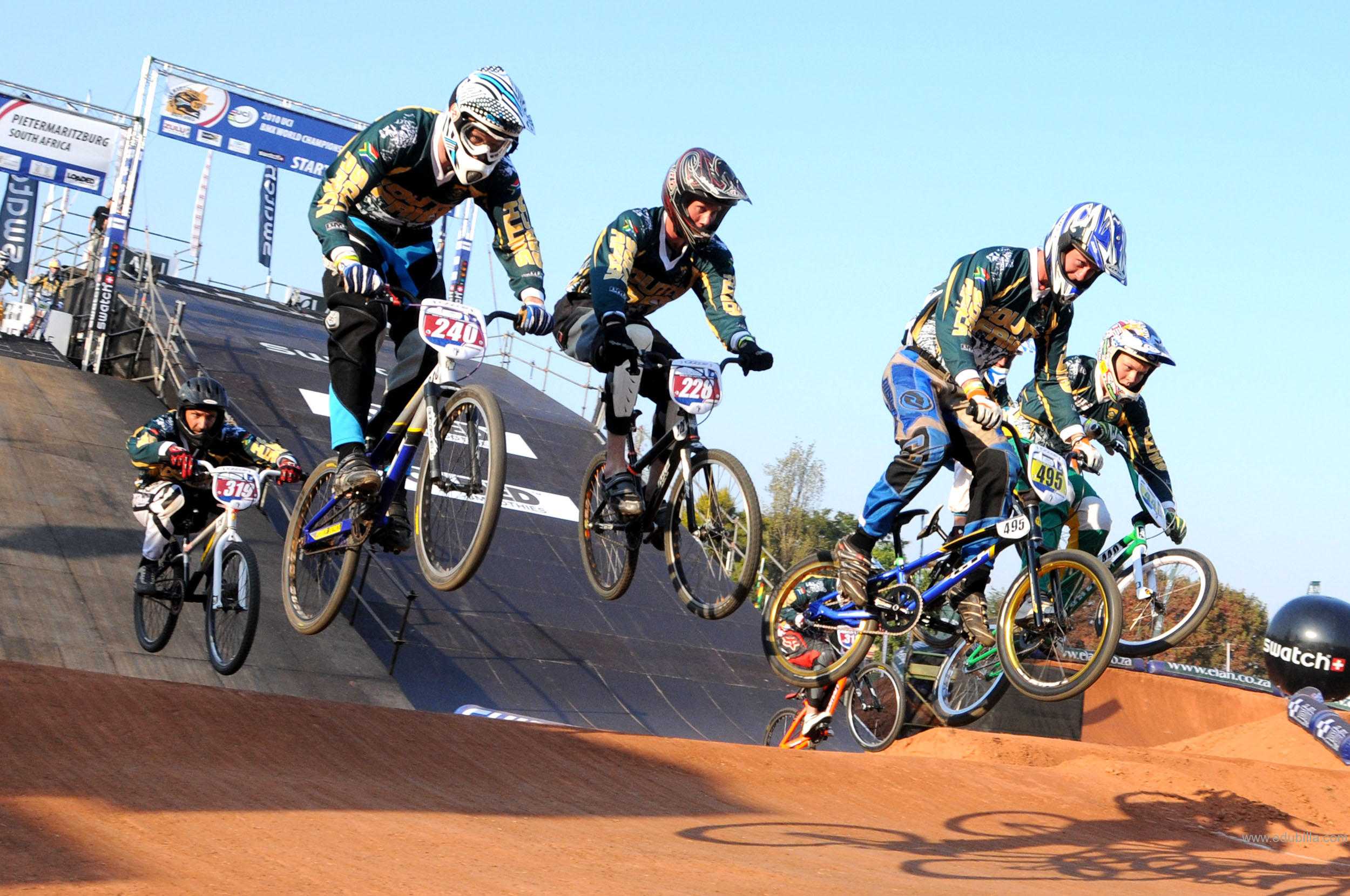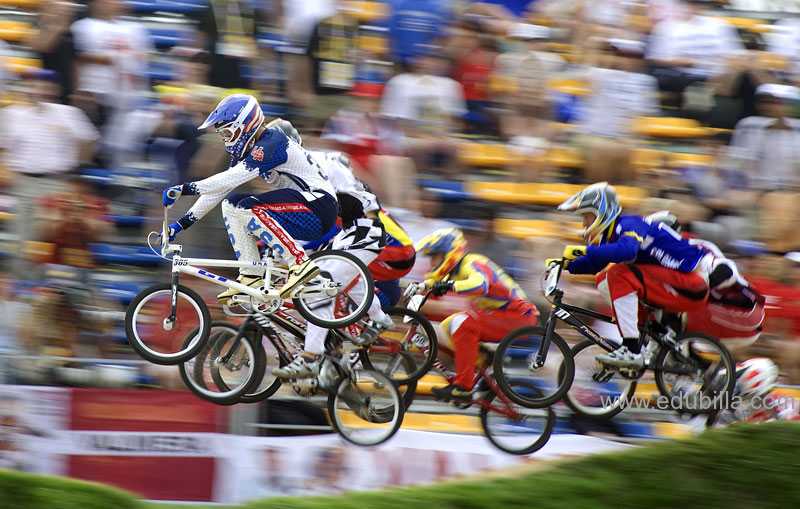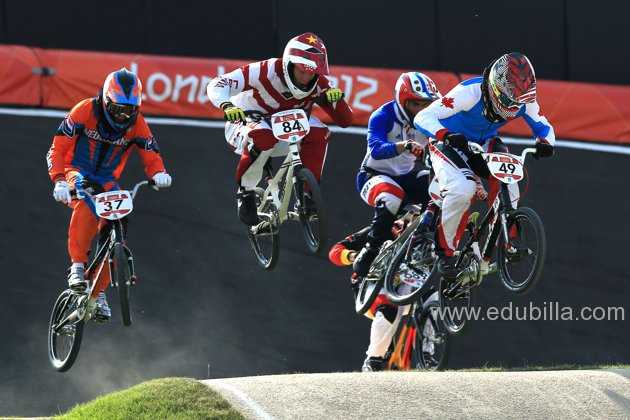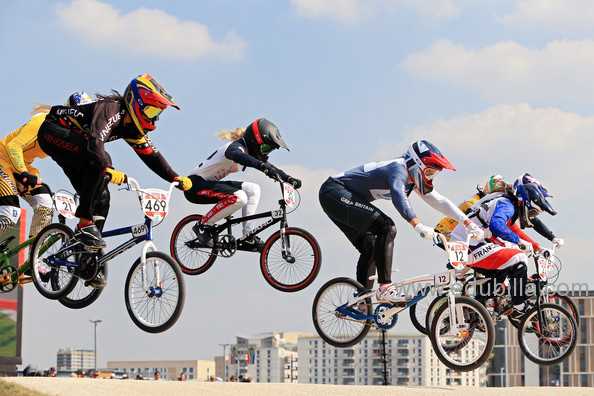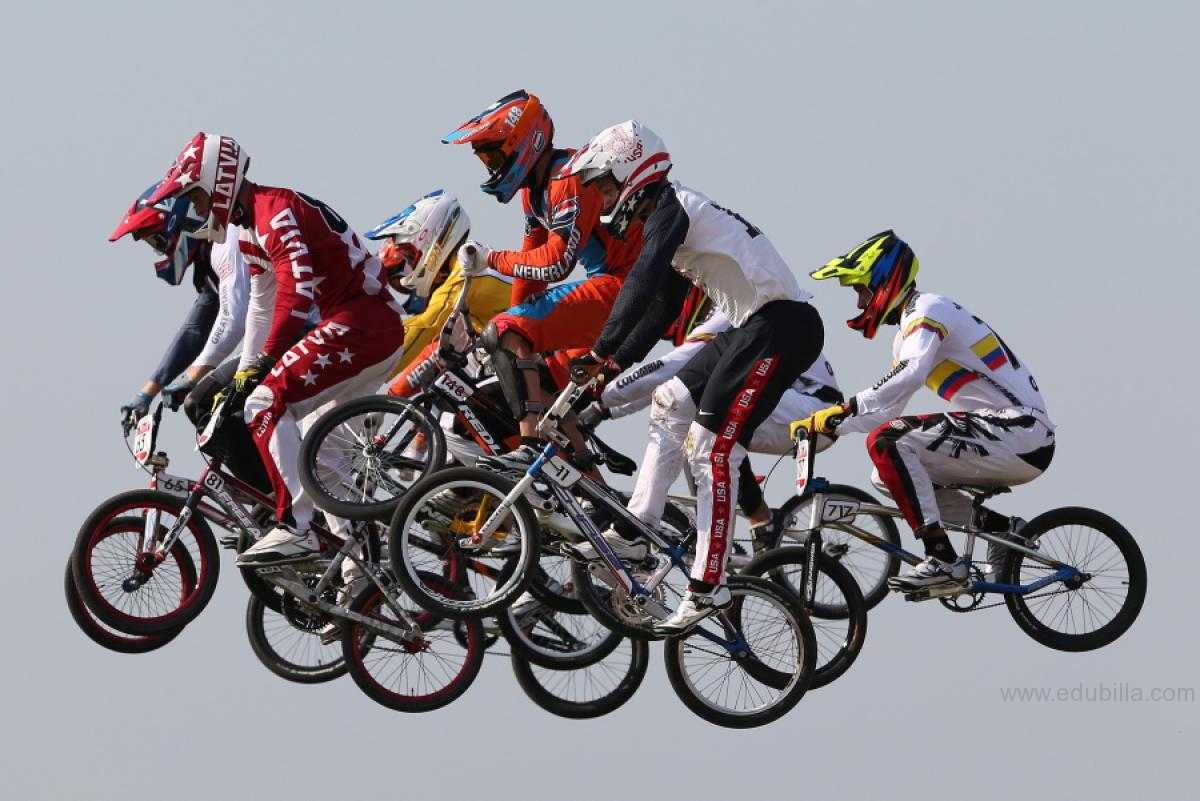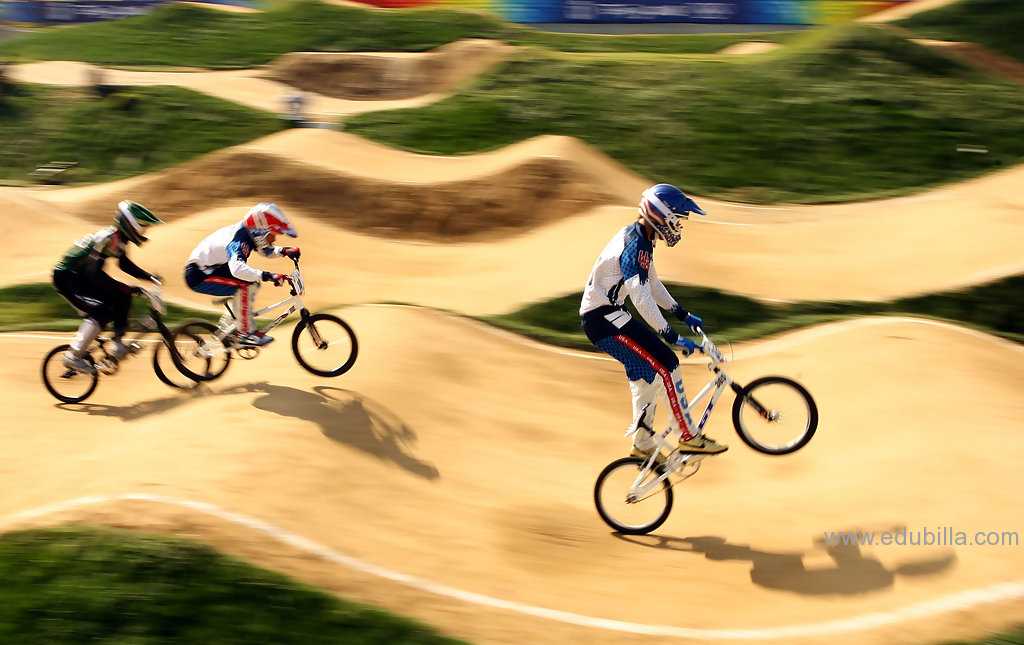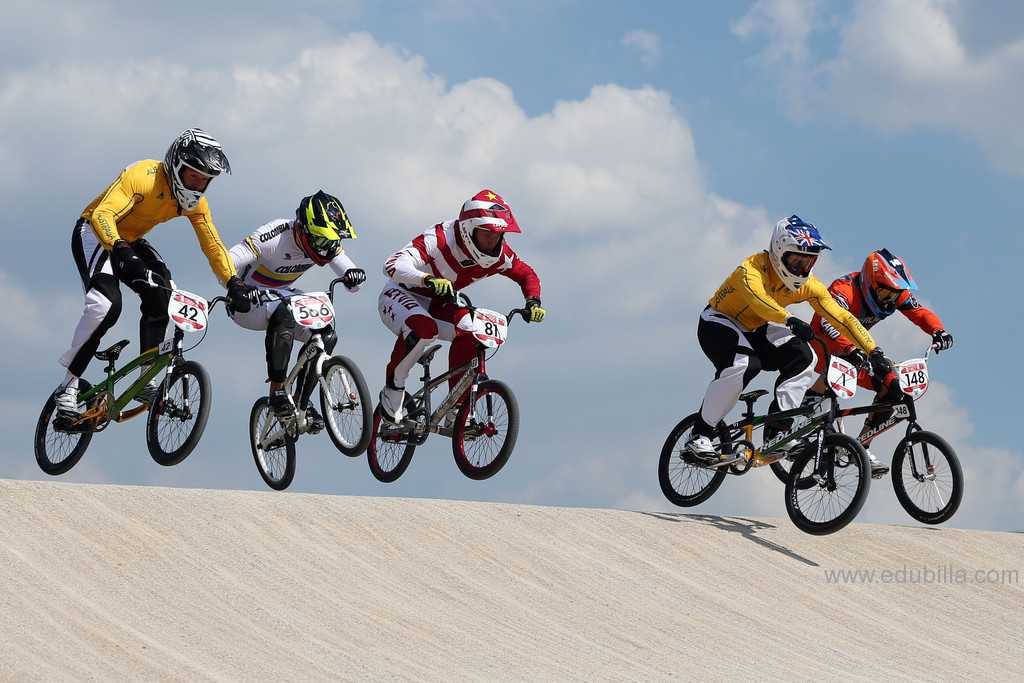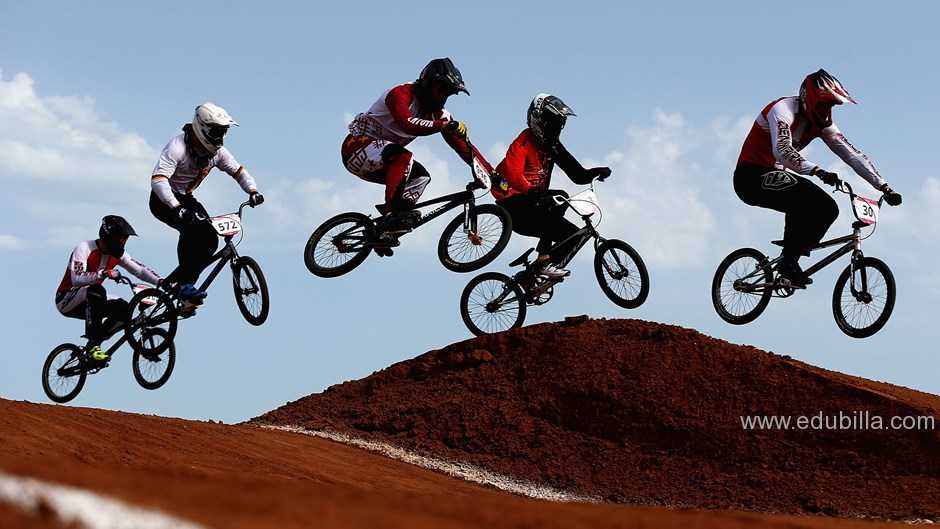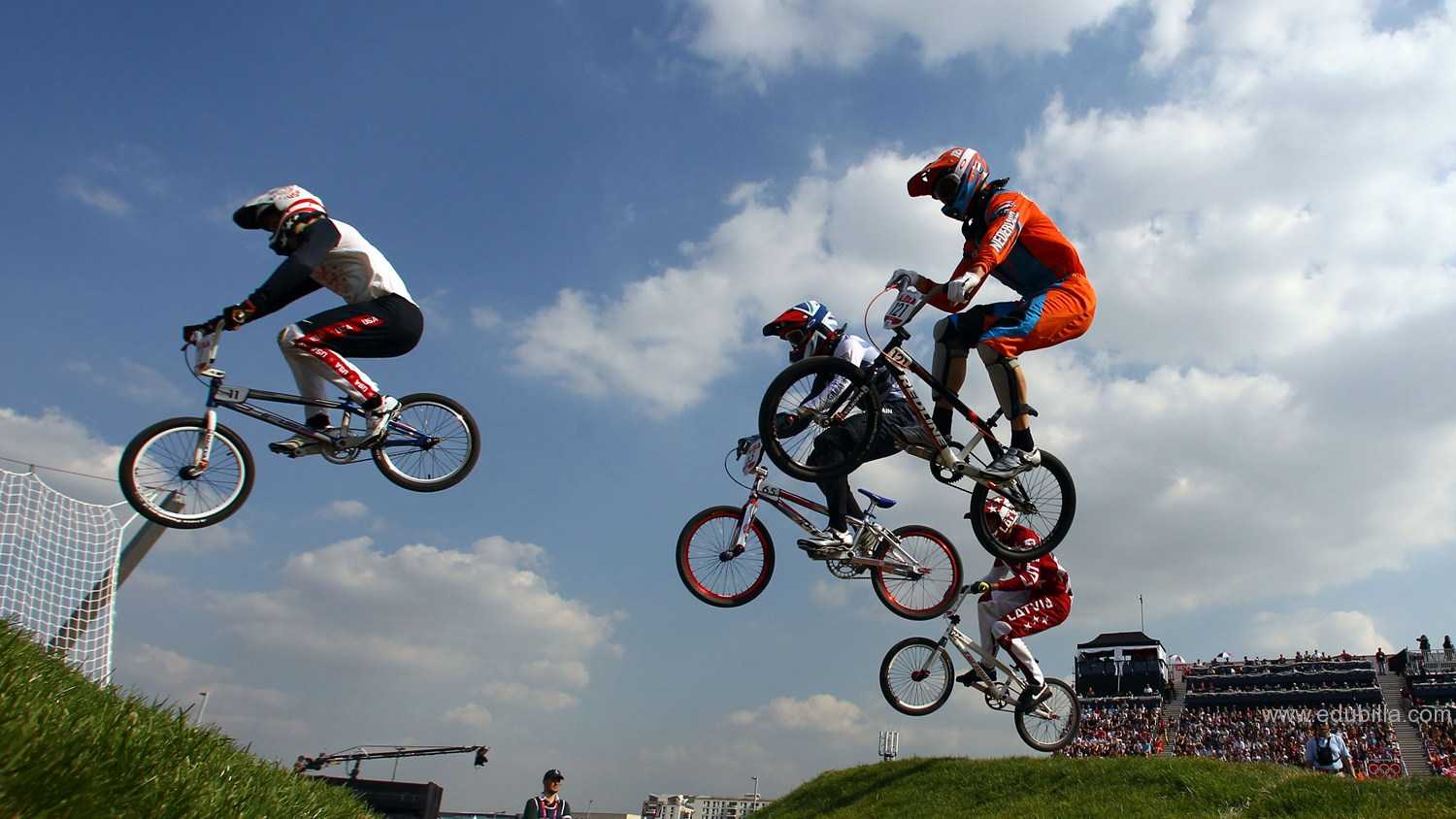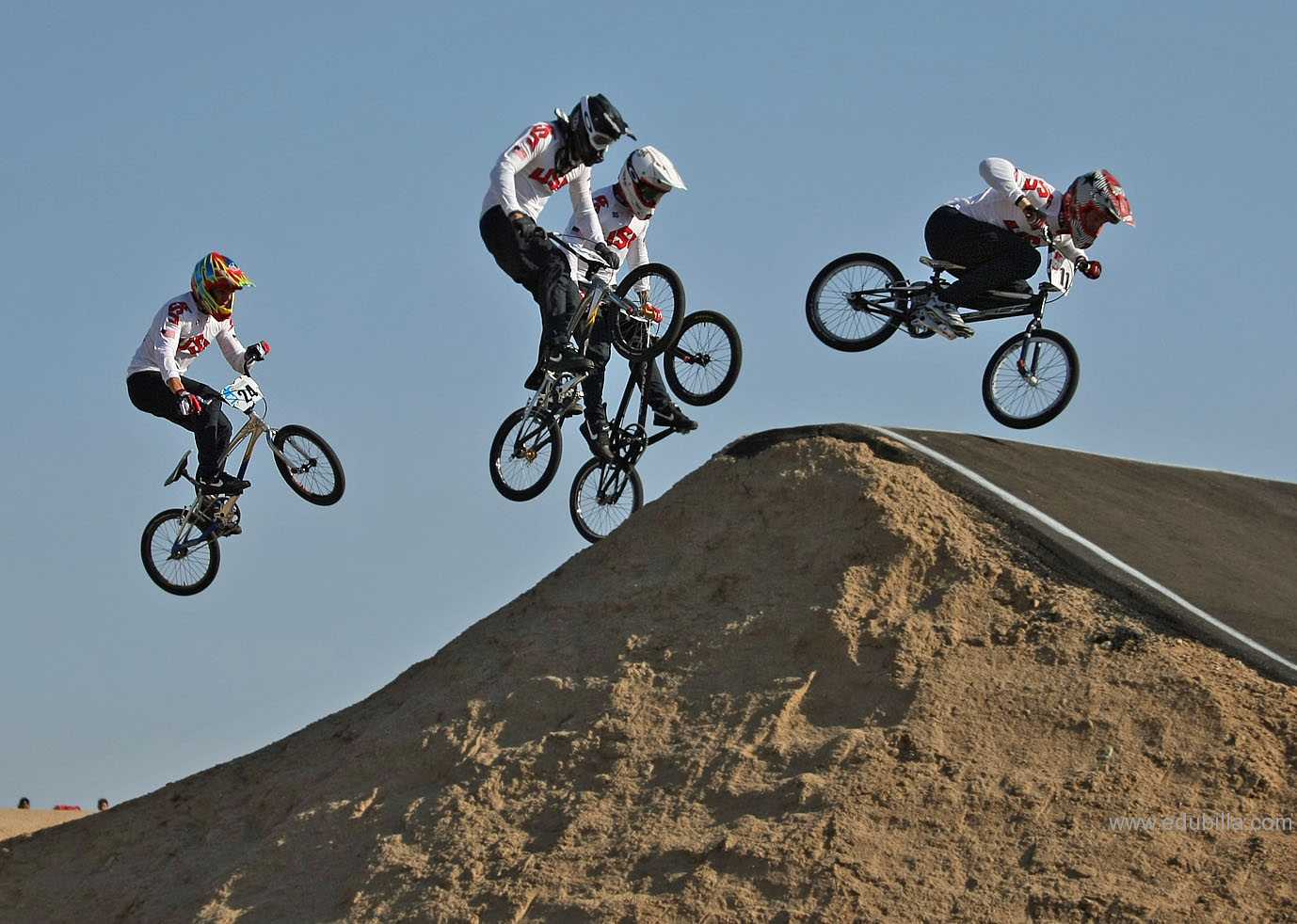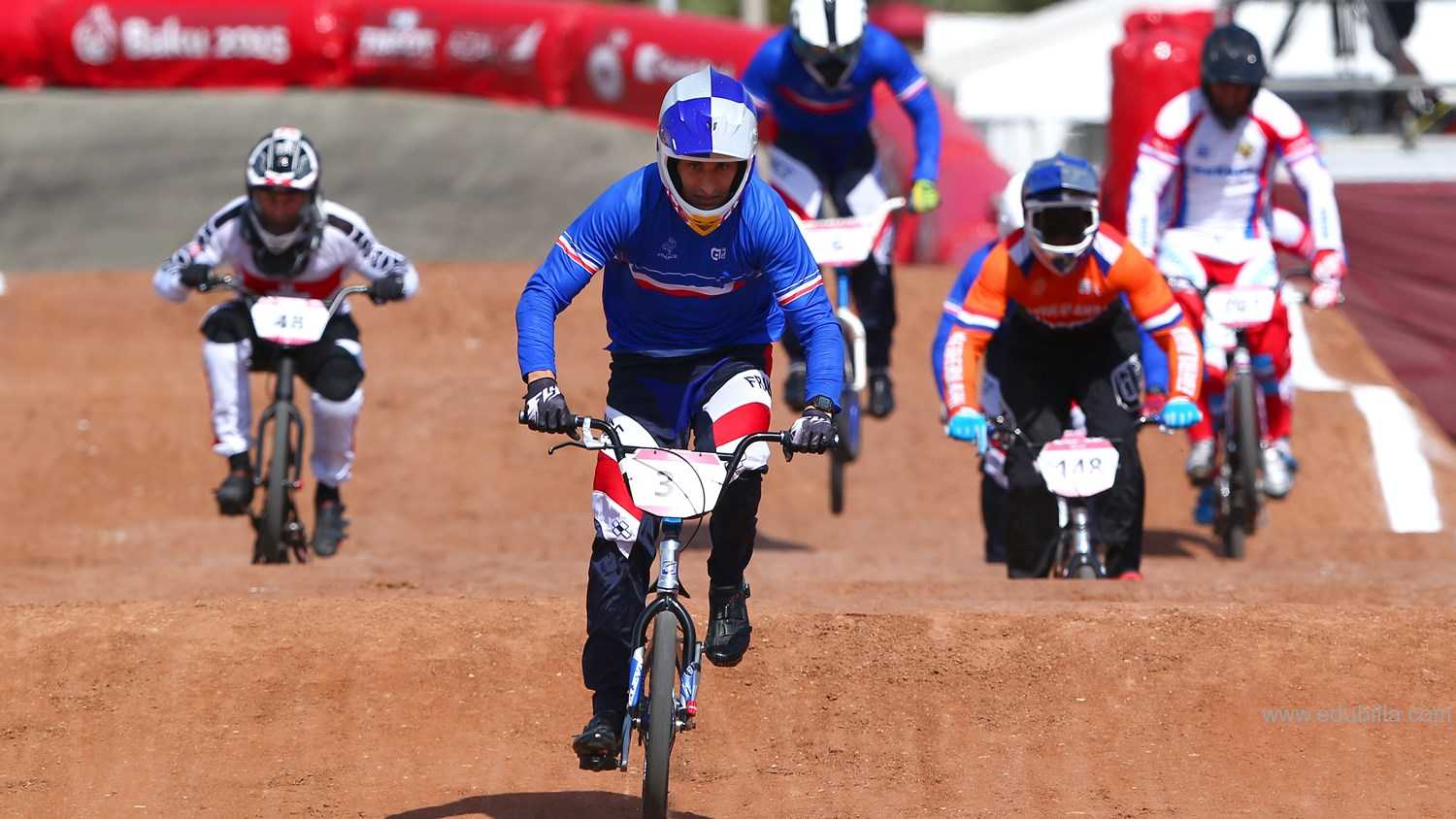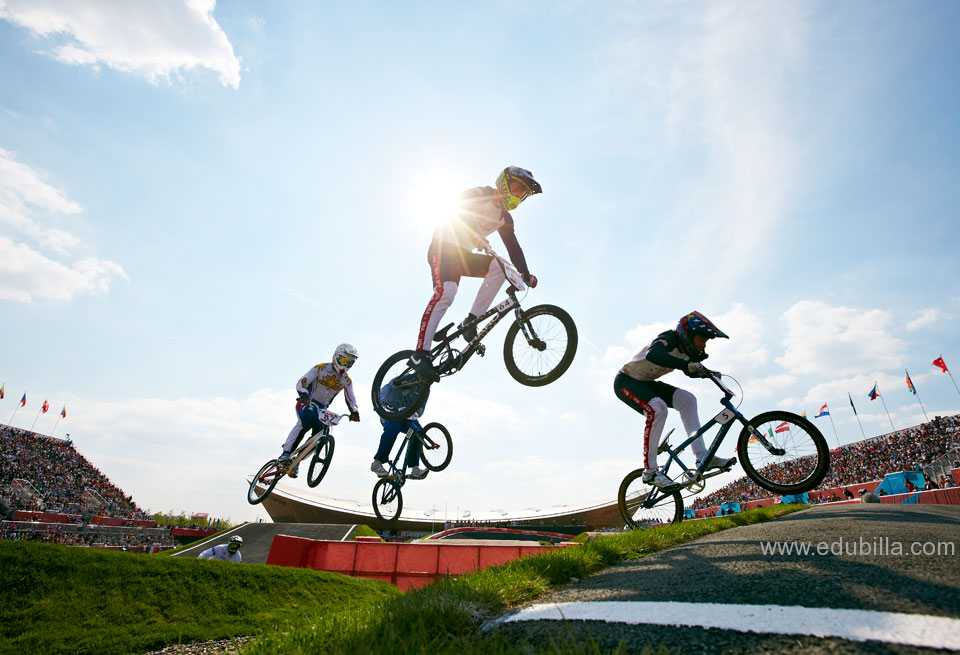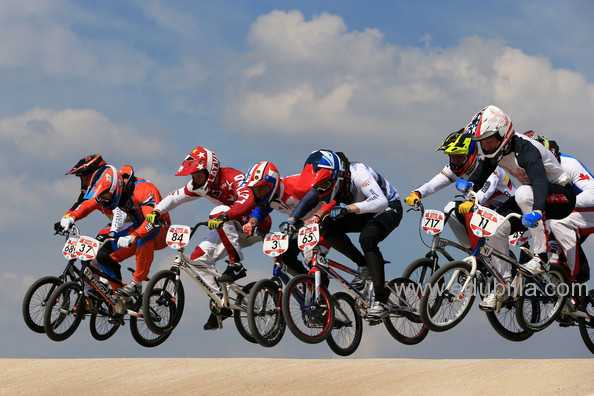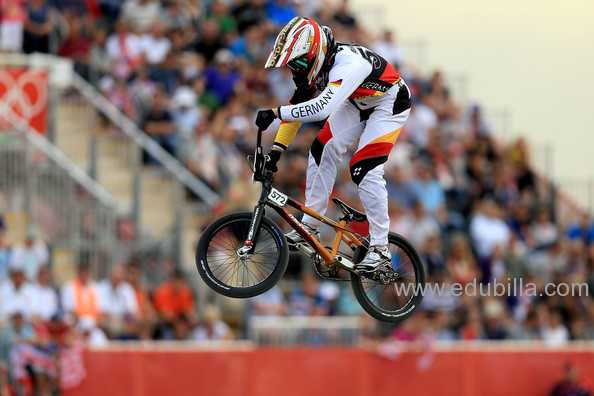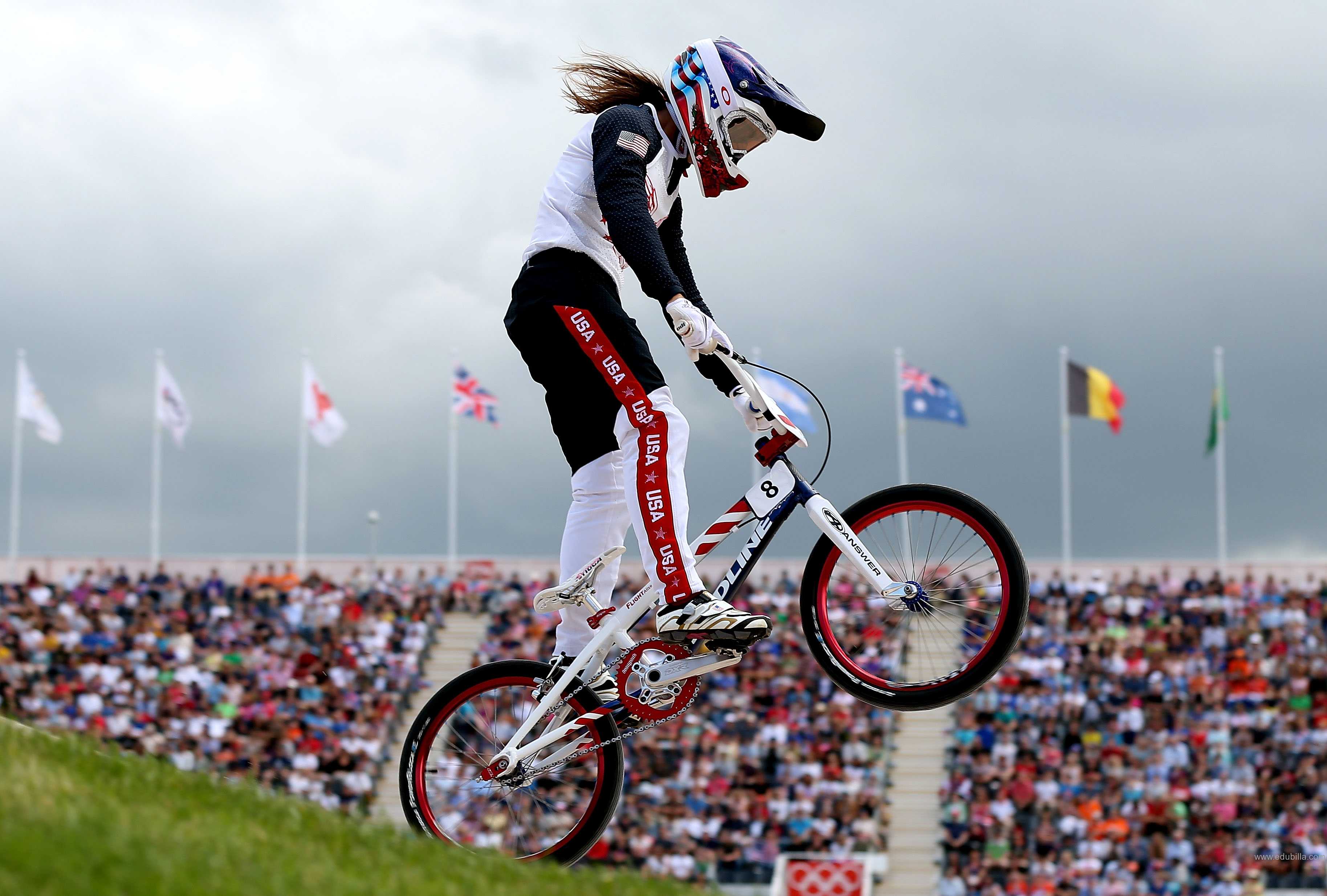
Overview Of Cycling BMX
BMX, an abbreviation for bicycle motocross, is a cycle sport performed on BMX bikes, either in competitive BMX racing or freestyle BMX, or else in general on- or off-road recreation. BMX began when young cyclists appropriated motocross tracks for fun, racing and stunts, eventually evolving specialized BMX bikes and competitions.
Game Rules
- The track usually is a quarter-mile (350-370 meters) long where eight riders compete in each heat of the Olympic BMX races.
- There are total of four rounds to determine who shall stand on the medalist podium when the dust settles.
- BMX bikes with only one gear and one brake are permitted.
- The permissible diameter length of the racing riders wheels are 20 inches, which is approximately two-thirds the size of wheels used on a standard road bike.
- Points are awarded according to winners spots and the top two riders from the first three races in each quarterfinal qualify for the semi-finals.
- All riders must wear the required gear compulsorily — long-sleeve tops and bottoms, gloves, helmets with full masks, knee and elbow pads for extra protection.
Detailed Cycling BMX Rules Can Be Downloaded From Documents
Equipments Need For Cycling BMX
- BMX Helmets
- Body Armor
- Knee Pads
- Gloves
- Neck Braces
- Padded Shorts
- Shin Guards
- Elbow Pads
- Ankle Guards
- Wrist Protection
- Pads Combo Packs
History Of Cycling BMX
BMX racing took off in California, inspired by motocross. It fast became popular and made its Olympic debut at the 2008 Beijing Games.
California Born:
Bicycle motocross (BMX) started in the late 1960s in California, around the time that motocross became a popular sport in the USA. The motorised version of the sport was the inspiration for the human-powered competition.
BMX spreads worldwide:
BMX racing offered exciting action at a low cost and the infant sport became an instant hit, especially in California. This led to the foundation of a sanctioning body for BMX in the USA in the early 1970s. Over the following decade, the sport gradually gained in international popularity.
Official International Sport:
In April 1981, the International BMX Federation was founded. BMX rapidly developed a unique sporting identity and it became evident that the sport had more in common with cycling than motorcycling. This was officially recognised in 1993 when BMX was fully integrated into the International Cycling Union (UCI). The sport made its Olympic debut at the 2008 Beijing Games.
Olympic History:
It was in 2008 in Beijing that BMX made its debut on the Olympic programme. The men’s event was won by Latvia’s Maris Strombergs. In the women’s event, it was France’s Anne-Caroline Chausson who took the first Olympic title in this discipline.
BMX is one of the fastest and youngest cycling disciplines. Its principle is simple: eight riders compete on a track filled with jumps, tight bends and obstacles. In Beijing, the Laoshan velodrome track was 370m long for the men and 350m long for the women.
Origin Of Cycling BMX
BMX began in the early 1970s when children began racing their bicycles on dirt tracks in southern California, inspired by the motocross stars of the time. The size and availability of the Schwinn Sting-Ray and other wheelie bikes made them the natural bike of choice for these races, since they were easily customized for better handling and performance.
1970- BMX racing was a phenomenon by the mid-1970s. Children were racing standard road bikes off-road, around purpose-built tracks in California.
1972-The 1972 motorcycle racing documentary On Any Sunday is generally credited with inspiring the movement nationally in the United States; its opening scene shows kids riding their Sting-Rays off-road. By the middle of that decade the sport achieved critical mass, and manufacturers began creating bicycles designed especially for the sport.
George E. Esser:
George E. Esser founded the National Bicycle League as a non-profit bicycle motocross sanctioning organization in 1974. Before they set up the NBL, Esser and his wife, Mary, sanctioned motorcycle races with the American Motocross Association (AMA). Their two sons, Greg and Brian, raced motorcycles, but also enjoyed riding and racing BMX with their friends. It was their sons’ interest, and the lack of BMX organizations in the East, which prompted Esser to start the NBL in Florida.
First World Championships:
By 1977, the American Bicycle Association (ABA) was organized as a national sanctioning body for the growing sport. In April 1981, the International BMX Federation was founded, and the first world championships were held in 1982. Since January 1993 BMX has been integrated into the Union Cycliste Internationale.
Popularity:
Freestyle BMX is now one of the staple events at the annual Summer X Games Extreme Sports competition and the Etnies Backyard Jam, held primarily on the East and West coasts of the United States. The popularity of the sport has increased due to its relative ease and availability of places to ride and do tricks.
Governing Bodies
Union Cycliste Internationale(UCI):
The Union Cycliste Internationale is the world governing body for sports cycling and oversees international competitive cycling events. The UCI is based in Aigle, Switzerland.
The UCI issues racing licenses to riders and enforces disciplinary rules, such as in matters of doping. The UCI also manages the classification of races and the points ranking system in various cycling disciplines including mountain biking, road and track cycling, for both men and women, amateur and professional. It also oversees the World Championships.
The History of UCI at a Glance:
The UCI was founded in Paris in 1900, and its headquarters are now located at the UCI’s World Cycling Centre in Aigle, Switzerland.
1893: First Track World Championships.
1896: First modern Olympic Games. Cycling is included in the programme.
14 April 1900: Foundation of the Union Cycliste Internationale by the Belgian, French, Italian, Swiss and United States National Federations in Paris (FRA).
1921: First Amateur Road World Championships.
1927: First Professional Road World Championships.
1950: First Cyclo-Cross World Championships.
1956: First Indoor Cycling World Championships.
1965: Creation of the International Amateur Cycling Federation (FIAC) and the International Professional Cycling Federation (FICP). The UCI became the coordinating body for these two federations. The FIAC was established in Rome (ITA), the FICP in Brussels (BEL).
1969: On July 1st, the UCI headquarters are transferred from Paris (FRA) to Geneva (SUI).
1977: The FICP headquarters are transferred from Brussels (BEL) to Luxemburg (LUX).
1982: First BMX World Championships.
1984: First Trials World Championships.
1990: First official Mountain Bike World Championships.
1992: Reunification of FIAC and FICP within the UCI. On November 1st, the Federation moves to Lausanne (SUI). On December 16th, inauguration of the new UCI headquarters in Lausanne.
1993: First official BMX World Championships.
1996: The mountain bike becomes an Olympic sport.
14 April 2002: Inauguration of the new UCI headquarters in Aigle (SUI).
2008: BMX becomes an Olympic sport.
To Visit UCI Click Here.
Awards Related To Cycling BMX
THE BIKENZ COMMUNITY AWARDS:
BikeNZ Community Awards celebrated those who have proved invaluable to cycling, be it Road & Track, BMX, Mountain Bike or Schools Cycling.
British Cycling:
BMX Coaching Awards:
Level 1 Award in Coaching Cycling (L1ACC)
Level 2 Certificate in Coaching Cycling (L2CCC)
Level 2 Discipline-specific Awards (L2DSA):
Level 2 Road and Time Trial Coaching Award
Level 2 Track Coaching Award
Level 2 Cycle Speedway Coaching Award
Level 2 Mountain Bike Coaching Award
Level 2 BMX Coaching Award
Level 2 Cyclo-cross Award
Level 3 Certificate in Coaching Cycling (L3CCC):
Level 3 Certificate in Coaching Mountain Bike
Level 3 Certificate in Coaching Road and Time Trial
Level 3 Certificate in Coaching Track
Australian Institute of Sport Awards:
AIS Junior Athlete of the Year-BMX Cycling
Sample Documents Of Cycling BMX
-Muhammad Ali

